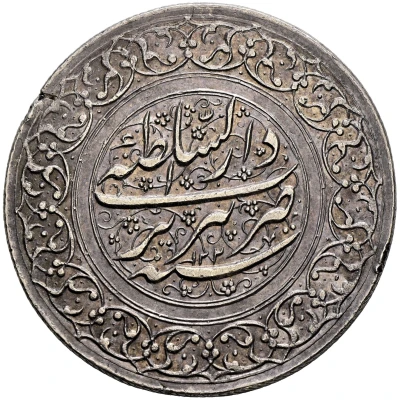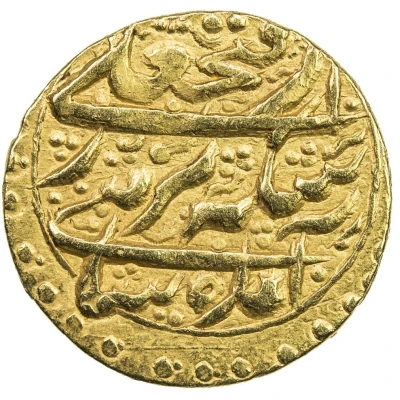


© Sincona AG
4 Rial - Fath-Ali Shah
1227 (1812) year| Silver | 41.54 g | - |
| Issuer | Iran |
|---|---|
| Shah | Fath-Ali Shah (1797-1834) |
| Type | Circulating commemorative coin |
| Year | 1227 (1812) |
| Calendar | Islamic (Hijri) |
| Value | 4 Rial |
| Currency | First Rial (1798-1825) |
| Composition | Silver |
| Weight | 41.54 g |
| Shape | Round (irregular) |
| Technique | Hammered |
| Demonetized | Yes |
| Updated | 2024-10-05 |
| Numista | N#418882 |
|---|---|
| Rarity index | 100% |
Reverse
Script: Persian (nastaliq)
Lettering:
ضرب دارالسلطنه تبریز
سنه ۱۲۲۷
Lettering (regular font):
ضرب دارالسلطنه تبریز
سنه ۱۲۲۷
Interesting fact
One interesting fact about the 4 Rial - Fath-Ali Shah 1227 (1812) coin from Iran is that it features a unique blend of Islamic and Persian architectural elements on its design. The obverse side of the coin showcases the bust of Fath-Ali Shah, the second Qajar king of Iran, surrounded by intricate floral patterns and Arabic script. The reverse side features a stunning depiction of the Golestan Palace, a UNESCO World Heritage Site located in Tehran, which was built during the reign of Fath-Ali Shah. The palace's architecture is a blend of Persian, Turkish, and European styles, reflecting the cultural diversity of the Qajar era. This coin is a beautiful representation of Iran's rich history and cultural heritage.



